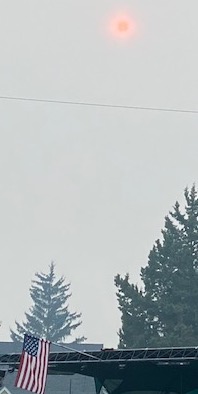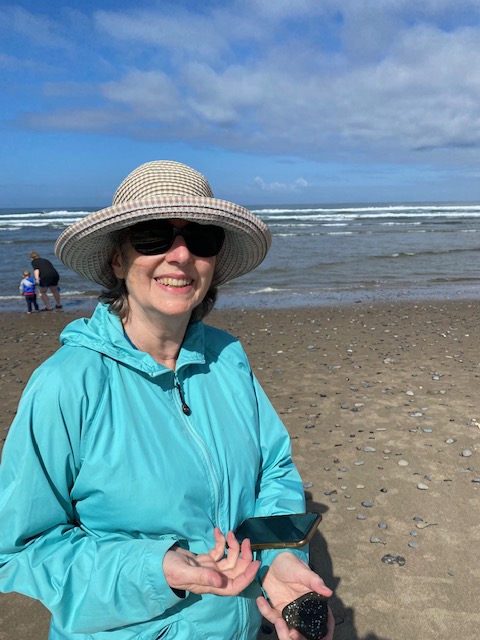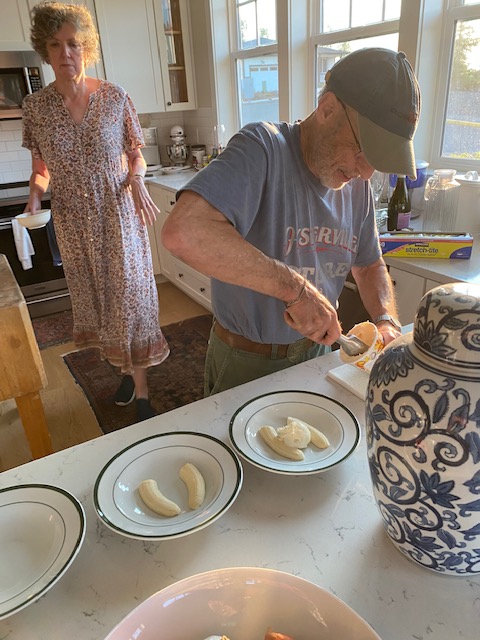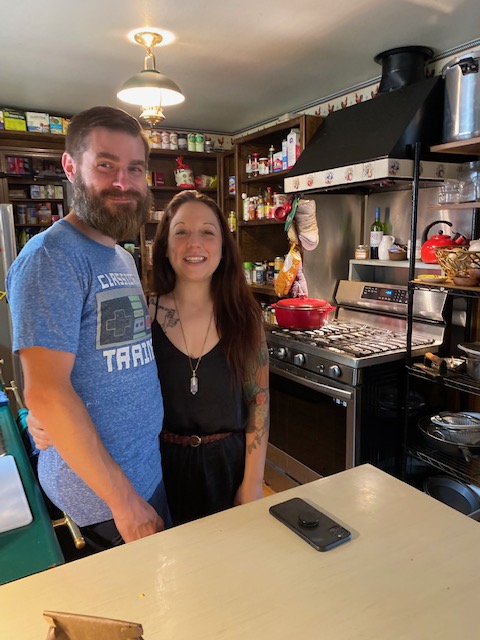Oregon, for the last two weeks, took us to burned-over pine forests and evergreen mountains, Lavaland and the High Desert, dazzling cool days and 105-degree smog so thick the sun was like dried blood. We crossed the Columbia and we waded in the Pacific, beheld the World’s Smallest Harbor (Depoe Bay) and the nation’s deepest lake (Crater Lake).
We caught up with kinfolk on small farms in Rogue River to the south (Chris and Lisa Judson’s) and Ridgeview, Washington, to the north (Vern and Kelly Pick’s), on the Cumming side in Tigard (the Beckleys) and the Waring side in Salem (the Judsons).
Newspapers around here are dying, like one of the burned-over forests. A literary nonfiction writer selling her books at the Oregon State Fair wondered at my thinking the Oregonian had some fine writers. “Have you seen the Oregonian?” Lauren Kessler asked me. No, not lately. Up in Longview, the paper where Linda Wilson was on the Pulitzer-winning team for coverage of Mt. St. Helen’s eruption, is down to two reporters now, she told us. It’s owned by a hedge fund. So the news we get is mostly wide-screen entertainment from cable TV.
Not long ago, Oregon was a good place for newspapers. My friend Berkley came to one of his first newspapers in Bend, Oregon, arriving just after Ken Kesey’s “Bend in the River” festival in 1974. Berkley texted me information, like this: the mayor of Bend had been George P. Putnam, grandson of the Putnam publishing firm and husband of Amelia Earhart (we saw her plane in the Evergreen Aviation and Space Museum in McMinnville). No relation, I guess, to another George Putnam who bought and ran the Salem Capital Journal from 1919-1953, who criticized a grand jury for refusing to indict a railroad president for attempted murder (and so was indicted by the grand jury for libel, and convicted and jailed until the Oregon Supreme Court overturned the conviction on free-press grounds). “The newspaper without enemies has no friends,” he wrote. In the 1920s, he attacked the Klan, which we learned in a walking tour was powerful in Salem, burning out the Chinese residents who ran the opium dens and had to stay underground until chased away.
The news is old here, more than three hours behind the East Coast, written in its own history. The Kalapuya Indians were settled long and peacefully in the Willamette Valley before the beaver trappers and traders, the Hudson Bay Company and Astors, the Methodist Missionary settlers who came up on the Lausanne around the Horn in 1839-40 (including Lewis Judson, my brother-in-law’s ancestor), Jason Lee and Thomas Kay the woolen-mill owner (his mill becoming Pendleton). The Oregon Trail families who made this a state in 1859. It was all spelled out and restored in the Willamette Heritage Center at Mission Mill on Mill Creek. (We had a good shade-deck lunch on Saturday at Ram Pub over the choiring Mill Creek tailrace).
And it’s older, in the volcanic rubble and obsidian wastelands, the startling blue water of vast Crater Lake, centuries of pure rainwater and snowmelt without earth’s successions. The soft woods and wetlands were well kept in micro-environments at Oregon Garden in Silverton, but the rides and crafts and 4-H contests at the famous Oregon State Fair were a glaring overlay of what humans can make of this world without nature, or nature domesticated and Western saddled. “Evolution is a lie . . .and here’s why,” said the banner over a booth there with a big plastic dinosaur. Looking around at the human Vanity Fair, I had to admit, evolution was no explanation for all this.







